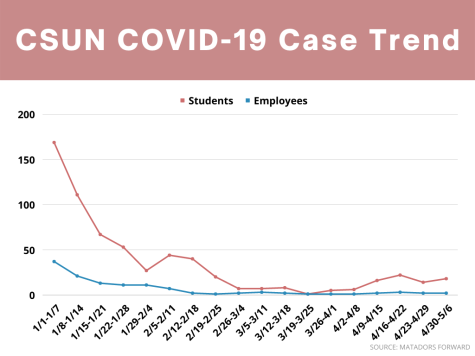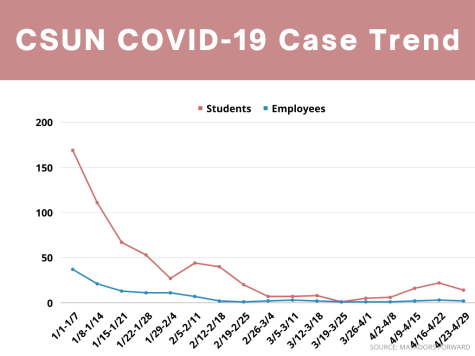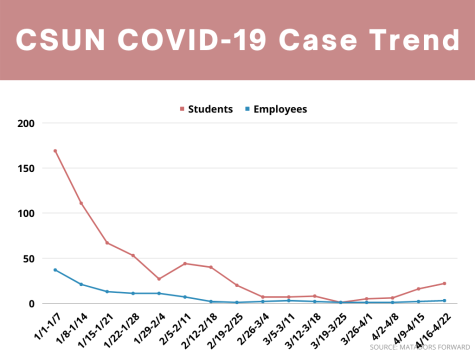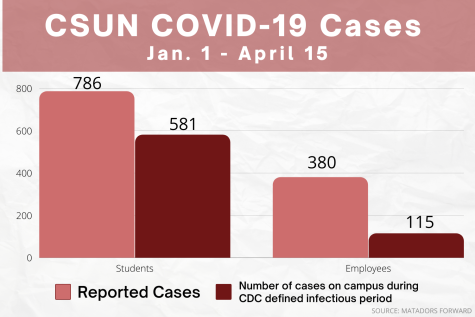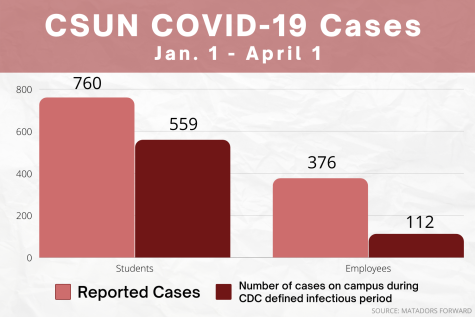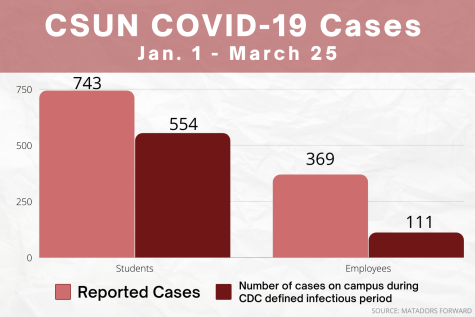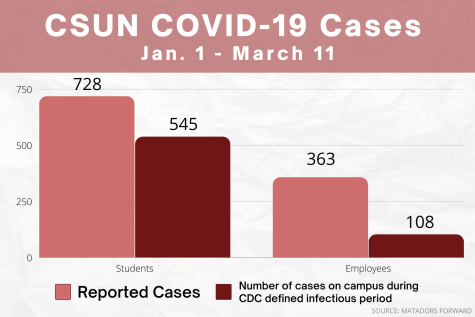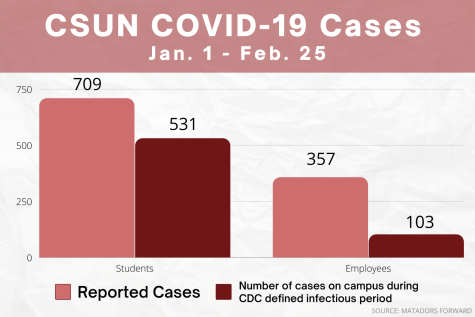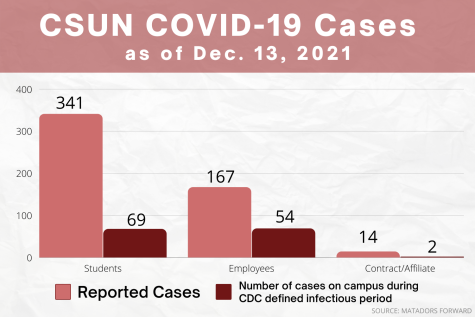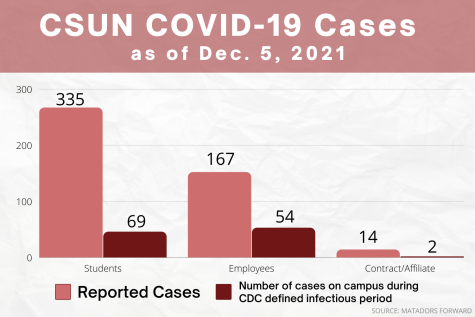COVID-19 Update: Gov. Gavin Newsom announces new reopening plan for schools
December 31, 2020
Los Angeles County has the highest number of cumulative cases in the United States, while multiple other counties in California see a rise in the number of cases per capita.
The Centers for Disease Control and Prevention forecasts an upward trend in the number of deaths nationwide. L.A. County currently holds the record for the most confirmed cases in the nation.
We have compiled data and guidance from the Los Angeles County Department of Public Health to provide an update for L.A. County. Data is up to date as of Dec. 30. Here is your weekly COVID-19 update.
Local official updates:
Newsom announces new reopening plan for schools
Newsom unveiled the “Safer Schools for All” plan during a press conference on Wednesday. The $2 billion plan incentivizes schools to reopen through increased testing for students and staff, school contact tracing, and prioritization of teachers in the next phase of vaccine distribution.
The state plans to have all students return to schools by spring 2021, some returning to school as early as February. Reopening is dependent on local case rates. Counties with a 7-day average of less than 28 cases per 100,000 people will be able to implement in-person learning.
Populations that have been disproportionately affected by COVID-19 will be prioritized in the return to in-person learning, including low-income families, students learning English as a second language, unhoused students, as well as special education students.
According to the Los Angeles Times, funding for the plan will be outlined in the upcoming state budget proposal.
Southern California stay-at-home order extended
The Southern California region’s stay at home order has been extended indefinitely. Southern California will remain under the order until ICU projections are at or above 15%.
The region is currently at 0% ICU capacity, alongside the San Joaquin region.
At the beginning of December, Newsom announced that regions whose ICU capacity fell under 15% would be under a stay at home order for three weeks. Currently, the order does not keep a three-week time frame but is instead dependent on the ICU capacity increasing to 15%.
Dr. Mark Ghaly, the secretary of California Health and Human Services, said on Monday the projections for the next four weeks do not foresee 15% ICU capacity.
Four of the five regions in California are under the stay-at-home order, with the exception of the Northern California region.
Los Angeles County residents must quarantine for 10 days after travel
L.A. residents who have recently returned from traveling must quarantine for 10 days upon arrival, according to a press release from the L.A. County Department of Public Health. The quarantine order comes after the County reached maximum ICU capacity.
The virus can take up to 14 days to incubate. If symptoms develop or a COVID test comes back positive, residents should remain isolated until they are fever-free for 24 hours.
“If you go back to work, go shopping or go to any gatherings at any point over the next 10 days, you could easily pass on the virus to others,” the statement read. “All it takes is one unfortunate encounter with an individual with COVID-19 for you to become infected, and sadly, for you to go on and infect others.”
New COVID strain discovered in the United Kingdom not detected in L.A. County yet
In a press conference on Wednesday, Ferrer said L.A. County has not yet detected the highly-contagious U.K. variant of the COVID-19 virus.
“But this does not mean that the variant is not circulating in L.A. County,” Ferrer said. “What it means is as of right now, we didn’t find this variant in the first set of samples.”
The county public health lab investigated 26 positive COVID test samples and did not find any evidence variant. The lab will continue to examine positive samples every week, and findings will be reported regularly.
A 30-year-old man in San Diego with no travel history was discovered to have been infected with the variant on Wednesday.
Total cases:

Since the first confirmed case of COVID-19 in L.A. County on Jan. 26, the number of positive cases continues to rise. Over 7% of L.A. County’s population of 10 million has had COVID-19.
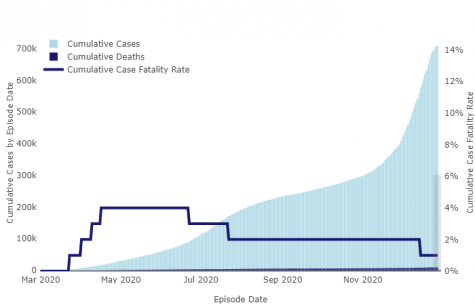
CSUN cases:
As of Dec. 21, there have been 58 reported cases among students and 42 reported cases among employees.
There are 10 reported cases among non-employee contractors.
There are no current cases that have been reported as a result of on-campus exposure.

These cases are reported to CSUN by individuals or public health officials. The university does not disclose the specific location of infected individuals for privacy reasons, but potentially exposed areas are disinfected prior to reopening.
If you test positive for COVID-19, whether or not you have been on campus, notify Yolanda Chassiakos, the CSUN Pandemic Manager, by emailing linda.reid.chassiakos@csun.edu.
Hospitalizations:
There are 7,546 COVID-19 positive patients currently hospitalized in L.A. County. There are 1,528 COVID-19 positive patients in the Intensive Care Unit. The County currently has 330 available ICU beds.
Race and ethnicity:
L.A. County’s data show cases and deaths disproportionately affect people of color.
The L.A. County Department of Public Health reported that Latinos make up 61.6% of cases with data on race and ethnicity compared to the population, while whites account for 13.5% of cases compared to the population.
Latinos account for 51.9% of all COVID-19 deaths when compared to the population.
What’s open:
Grocery stores – limited to 35% capacity
Essential retail – limited to 20% capacity
Some non-essential retail with modifications
Parks and beaches with modifications
Golf courses
Hotels with modifications
Shared residential pools
Gyms – outdoors with modifications
Indoor shopping malls – limited to 20% capacity
Wineries/breweries – indoor retail only with a limit of 20% capacity
What’s closed:
Indoor dining at restaurants
Indoor houses of worship
Indoor gyms
Hair salons
Barbershops
Nail salons
Bars
Cardrooms
Zoos/Aquariums
Tattoo shops
Face masks are still required in public. Gatherings should be limited to only people in your household.
Testing:
The L.A. County website has a list of testing locations available for both walk-up and drive-up testing. Testing is available by appointment only.
Many city and county test sites began operating on a modified schedule from Dec. 24 to Jan. 1.
A map of testing locations can be found here.

